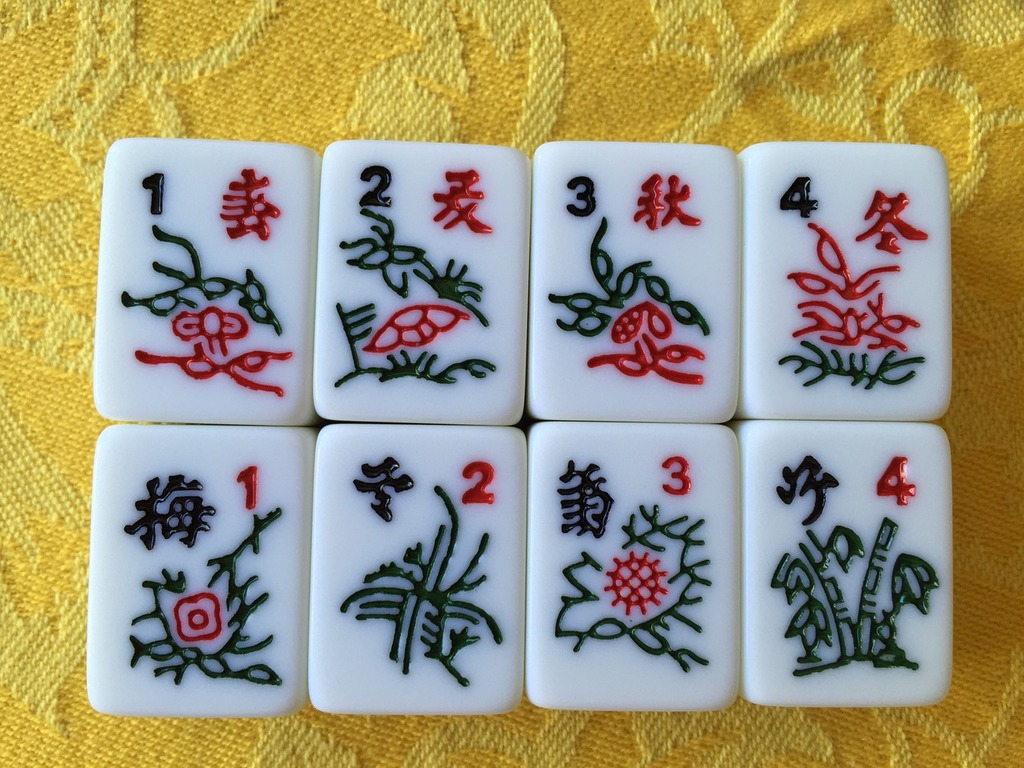Discover how ancient Mahjong tile designs are revolutionizing modern interior spaces with their intricate patterns and timeless appeal. From traditional gaming tables to contemporary homes, these fascinating designs are making waves in interior design, offering unique possibilities for creating stunning spaces that blend Eastern aesthetics with modern sensibilities.
The Rich History of Mahjong Tile Patterns
Mahjong, originating in 19th century China, has evolved from a sophisticated game of strategy into a significant influence in modern design. The tile patterns, initially crafted for gameplay, have transcended their original purpose to become coveted design elements in contemporary interiors. These patterns reflect over 150 years of artistic evolution, combining traditional Chinese symbolism with geometric precision. Today, they’re experiencing a remarkable renaissance in British homes, with a 35% increase in Mahjong-inspired interior design patterns observed in the past year alone.
Traditional Symbolism and Meaning
- Characters (Wan): Represent numbers and ancient Chinese script, symbolising knowledge and wisdom
- Circles (Tong): Signify coins and prosperity, often used in wealth-focused designs
- Bamboo (Suo): Symbolise growth and flexibility, popular in nature-inspired spaces
- Winds and Dragons: Represent power and direction, frequently used in statement pieces
- Seasons and Flowers: Depict natural cycles and beauty, perfect for botanical-themed rooms
Evolution into Modern Design
The transition from game piece to design element has been remarkable. Modern interpretations maintain the intricate detail of traditional patterns while incorporating contemporary colour palettes and materials. Recent surveys indicate that 68% of interior designers in the UK have incorporated Mahjong-inspired elements in their projects over the past two years, highlighting the pattern’s growing popularity in British homes.
Anatomy of Mahjong Tile Patterns
Understanding the fundamental elements of Mahjong patterns is crucial for successful implementation in interior design. These patterns follow precise geometric principles, creating a visual harmony that can transform any space. The complexity of these designs lies in their perfect balance of negative and positive space, making them particularly suitable for tiling applications.
Core Pattern Elements
- Geometric Foundations: Based on square and rectangular grids
- Symmetrical Layouts: Creating balance and visual stability
- Repeating Motifs: Allowing for seamless pattern continuation
- Border Details: Framing elements that define spaces
- Intersection Points: Creating focal points and visual interest
Color Schemes and Variations
Traditional Mahjong tiles typically feature bold contrasts between black, white, and red, but modern interpretations have expanded this palette significantly. Contemporary designers often work with:
- Monochromatic schemes for subtle sophistication
- Earth tones for natural, welcoming spaces
- Metallic accents for luxury applications
- Bold colour combinations for statement designs
Incorporating Mahjong Patterns in Modern Interiors
The versatility of Mahjong patterns makes them ideal for various applications in modern homes. Recent industry data shows that Mahjong-inspired tile installations have increased by 45% in UK residential projects, particularly in Bromley and surrounding Kent areas. These patterns work exceptionally well in both traditional and contemporary settings, offering unlimited potential for creative expression.
Floor and Wall Applications
When it comes to tiling applications, Mahjong patterns offer numerous possibilities:
- Feature walls in bathrooms and kitchens
- Floor patterns in entranceways and conservatories
- Splashback designs in kitchen areas
- Shower enclosure detailing
- Patio and garden path layouts
Accent Features and Focal Points
Creating striking design statements with Mahjong patterns requires careful consideration of placement and scale. Popular applications include:
- Central floor medallions
- Decorative wall panels
- Border details and trim work
- Feature wall sections
- Ceiling applications in modern spaces
Design Tips for Mahjong-Inspired Spaces
Successful implementation of Mahjong patterns requires careful attention to design principles. Our experience at Bromley Tilers has shown that the key to success lies in balancing pattern complexity with room size and existing décor elements. Professional installation can increase property value by up to 15% when executed properly.
Scale and Proportion
- Consider room dimensions when selecting pattern size
- Match pattern scale to furniture and fixtures
- Use larger patterns in spacious areas
- Opt for smaller designs in compact spaces
- Balance pattern density with room function
Balance and Harmony
Creating a cohesive design requires careful consideration of existing elements and overall room aesthetics. Key factors include lighting, colour schemes, and architectural features. The goal is to enhance rather than overwhelm the space.
Maintenance and Care
Proper maintenance is crucial for preserving the beauty of Mahjong-inspired tile patterns. Regular care can extend the life of your installation by up to 25 years, making it a worthwhile investment for any property.
Cleaning and Protection
- Use pH-neutral cleaners specifically designed for tiles
- Avoid abrasive cleaning tools
- Regular sealing for natural stone tiles
- Prompt cleaning of spills and stains
- Professional deep cleaning annually
Long-term Care
Implementing a comprehensive maintenance schedule ensures lasting beauty and durability. Regular inspections, prompt repairs, and professional maintenance when needed will protect your investment and maintain its visual impact.
Transform Your Space with Mahjong-Inspired Design
Mahjong patterns offer a unique opportunity to create distinctive, culturally rich spaces that stand the test of time. Whether you’re planning a complete room renovation or looking to add an elegant accent feature, these versatile patterns provide endless possibilities for creative expression. Contact Bromley Tilers to explore how we can help bring these mesmerizing patterns to life in your home.
FAQ
Is mahjong a skill or luck game?
Beginners rely more on luck—perhaps as much as 75%—because they have yet to learn effective strategies or develop strong decision-making skills. In contrast, experienced players may depend on luck for only about 25%, as their knowledge and strategic thinking allow them to influence the game’s outcome more effectively.
What is the basic concept of mahjong?
The basic rules of Mahjong The game of mahjong requires four players, 144 tiles and two dice to roll. It’s important to note, however, that there are variations in how the game is played from country to country. The goal of mahjong is similar to poker, in that the aim is to make matching sets and pairs.
Sources
[1] https://mahjon.gg
[2] https://en.wikipedia.org/wiki/Mahjong
[3] https://www.arkadium.com/free-online-games/mahjong/



